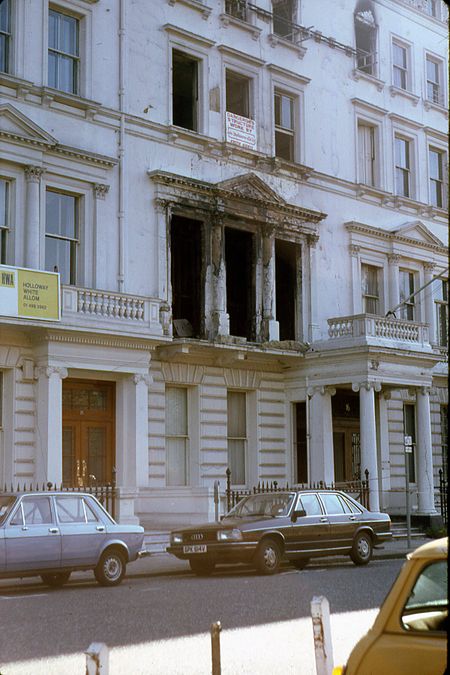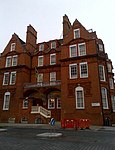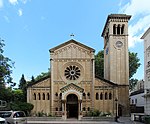Iranian Embassy siege

The Iranian Embassy siege took place from 30 April to 5 May 1980, after a group of six armed men stormed the Iranian embassy on Prince's Gate in South Kensington, London. The gunmen, Iranian Arabs campaigning for sovereignty of Khuzestan Province, took 26 people hostage, including embassy staff, several visitors, and a police officer who had been guarding the embassy. They demanded the release of prisoners in Khuzestan and their own safe passage out of the United Kingdom. The British government quickly decided that safe passage would not be granted and a siege ensued. Subsequently, police negotiators secured the release of five hostages in exchange for minor concessions, such as the broadcasting of the hostage-takers' demands on British television. By the sixth day of the siege the gunmen were increasingly frustrated at the lack of progress in meeting their demands. That evening, they killed a hostage and threw his body out of the embassy. The Special Air Service (SAS), a special forces regiment of the British Army, initiated "Operation Nimrod" to rescue the remaining hostages, abseiling from the roof and forcing entry through the windows. During the 17-minute raid they rescued all but one of the remaining hostages and killed five of the six hostage-takers. An inquest cleared the SAS of any wrongdoing. The sole remaining gunman served 27 years in British prisons. The Iran–Iraq War broke out later that year and the hostage crisis in Tehran continued until January 1981. Nonetheless, the operation brought the SAS to the public eye for the first time and bolstered the reputation of Thatcher's government. The SAS was quickly overwhelmed by the number of applications it received from people inspired by the operation and experienced greater demand for its expertise from foreign governments. The building, damaged by fire during the assault, was not reopened until 1993. The SAS raid, televised live on a bank holiday evening, became a defining moment in British history and proved a career boost for several journalists; it became the subject of multiple documentaries and works of fiction, including several films and television series.
Excerpt from the Wikipedia article Iranian Embassy siege (License: CC BY-SA 3.0, Authors, Images).Iranian Embassy siege
Princes Gate, London Knightsbridge
Geographical coordinates (GPS) Address Nearby Places Show on map
Geographical coordinates (GPS)
| Latitude | Longitude |
|---|---|
| N 51.501527777778 ° | E -0.17219444444444 ° |
Address
Princes Gate 15
SW7 1PZ London, Knightsbridge
England, United Kingdom
Open on Google Maps










